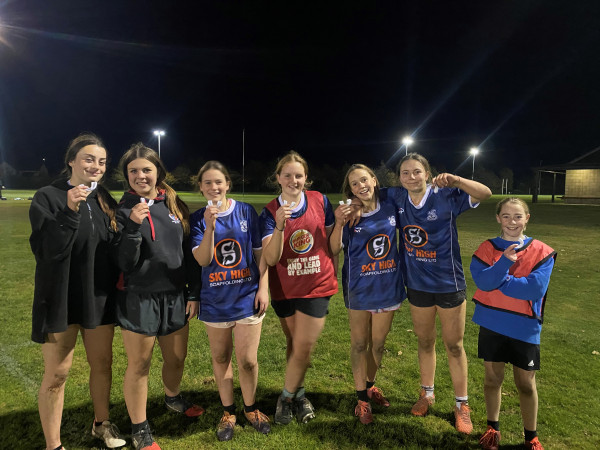Impact of smart mouthguard on professional rugby hard to call
23 February 2024 | News
PhD student Nicole Spriggs will be keenly following the Super Rugby Pacific this year to see how the introduction of mouthguards to measure the G forces in impacts plays out.
 Nicole Spriggs
Nicole Spriggs
She has spent the last two years measuring the player impacts in rugby using the mouthguards, with a particular focus on female players.
It could change the game, she said, and more players than anticipated could be heading to the sideline for medical testing to see if they had suffered concussion. However, there had not been a lot of research done in the area yet, so it was hard to predict.
Male impact limits are set at 70g while female players are at 50g.
Seeing the numbers might scare people and could put some off the game.
However, she said the proportion of concussions that occurred in sport was small compared to society at large, such as through accidents, and there were other benefits of team sport which needed to be taken into account.
Her research found over a 20-game season that two to three players a game suffered impacts which would have been high enough for them to leave the field if they were in Super Rugby.

Players involved in Nicole's research.
Male players on average had two hits over the 70g limit per season, while female players had three. However, these were at school level, and she said professional players would hit harder in direct contact.
She said it was good that World Rugby had instituted the move, but there were a lot of unknowns about the direction it could lead the sport.
If it led to tackling lower, she said the whiplash from hitting around the waist could lead to a worse concussion.
Players in her research reported concussion symptoms but the impacts had not shown up as over the limit, while another suffered three possibly concussive impacts in one tackle.
There were lots of factors around how bad the concussion was: whether a player was tired or didn’t see the tackle coming so they weren’t braced for it, and where they were hit on the head.
With more data, the threshold for assessment could change.
She didn’t know if the mouthguards would filter down through the game as they were expensive, and some players could chomp through three a season.
Impacts might not go over the limits but could be cumulative, but how to gauge the overall impact was unknown.
Nicole said it would be a good way to understand player loading and adjust the training if they were receiving to many low-level impacts.
Another benefit could be that more information for players and coaches around how to look after themselves after a concussion would be needed.
She said the mouthguard use could be a way for the sport to determine the risks involved, as it was under pressure from former players taking legal action around not being made aware of possible health repercussions.
"They could say if you want to play, here are the numbers, it’s your choice."
For Nicole it could be a well-justified distraction as she spends the year writing up her results.




